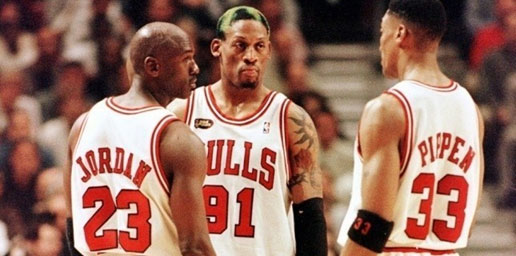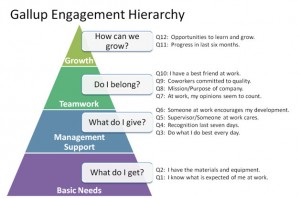What Real Change Leaders Know: There’s No “I” in TEAM, But There is a ME
“The strength of the team is each individual member. The strength of each member is the team.”
Phil Jackson, (1945-present) is widely considered one of the greatest coaches in the history of the National Basketball Association (NBA). As head coach of the Chicago Bulls, the Bulls won six NBA titles. He holds the NBA record for most combined championships (13) as a player and a head coach. He also has the highest winning percentage of any NBA coach.

This month we cover the Individual Values and Needs dimension of the Burke-Litwin model for organizational performance and change. This dimension seeks to explore the employee’s opinion about his work so as to identify the quality factors that will result in job enrichment and better job satisfaction.
We all go to work to have some of our personal needs met. Because teamwork is highly reliant on individuals performing to their best, one of the leader’s key roles is to help each individual align his own needs and interests with the goals and pursuits of the team. A team of individuals who are committed to and passionate about the team’s goals because they coincide with their own needs is far more powerful than a team of individuals who have over-ridden their own needs for the good of the team and are only co-operating in a lackluster manner.
Many of you are familiar with Gallup’s Q12 survey, the 12 questions that measure the most important elements of employee engagement that tie directly to performance outcomes.
Gallup organizes the 12 questions into an engagement hierarchy with four sections. The bottom two sections of the hierarchy are the foundational items. Pay close attention to these first six items. Gallup research has shown that if the foundational items are not securely in place, making progress toward the other elements can be difficult.
- The BASIC NEEDS section is made up of the two most fundamental aspects of the work environment: helping an employee know their expectations and making sure they have the tools necessary to their job well.
- The MANAGEMENT SUPPORT section includes positioning team members to do what they do best, providing frequent recognition, helping team members feel cared about and having someone at work who encourages development.
- The TEAMWORK section is about the aspect of feeling as though you belong. The four questions that make up this section are about opinions counting, the mission/purpose of the company connecting to the work employees are doing, colleagues committed to doing quality work, and having a best friend at work.
- The GROWTH section deals with the growth aspect of the work environment. The two questions that make up this section are, “Someone has discussed my progress in the last six months,” and “This last year I have had opportunities to lean and grow.”
ACTION
A leader that ignores or negates the individual’s needs and values is setting her team up for failure. To build an engaged and committed team, consider how you can incorporate these questions into your regular one-on-one and team conversations.
A leader I’m working with now is setting aside 15 minutes on her weekly status meeting agenda with each of her direct reports to begin discussing these questions. Based on her leader’s feedback, she will be able to individualize and refine her management approach based on her leaders’ specific needs and values. Her ultimate goal? Developing and supporting a highly performing team of engaged individuals.
- News – Quarterly 2018 - June 28, 2018
- News – Quarterly 2018 - March 29, 2018
- News – September 2016 - September 6, 2016
- Newsletter – May 2016 Edition - May 3, 2016
- Newsletter – February 2016 Edition - February 2, 2016
- Newsletter – November 2015 Edition - November 3, 2015
- Move from “Why?” to “What’s Next?” to Strengthen Your Change Agility - November 2, 2015
- Newsletter – September 2015 Edition - September 1, 2015
- 12 Elements of Burke-Litwin Model - January 27, 2015
- Newsletter – January 2015 Edition - January 14, 2015






